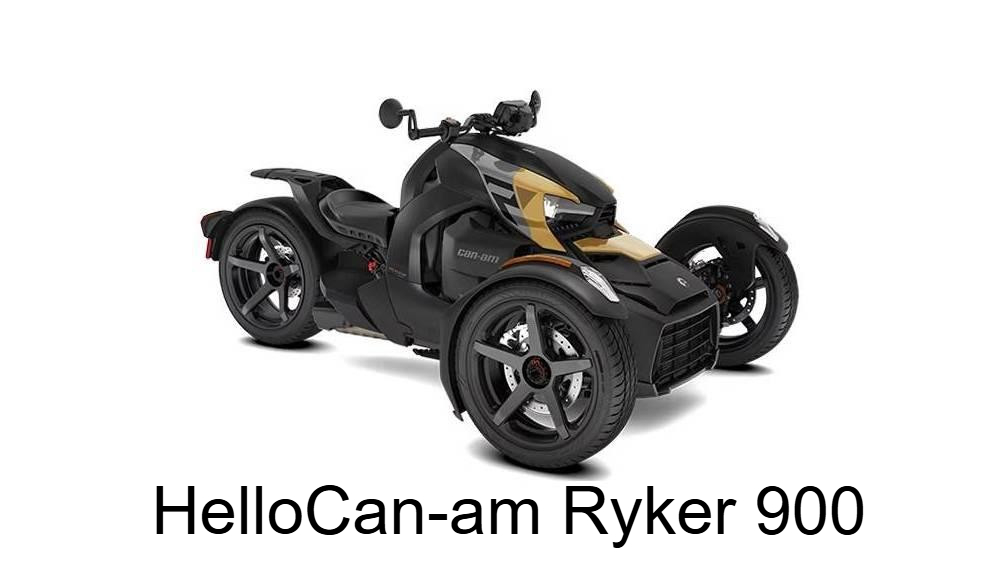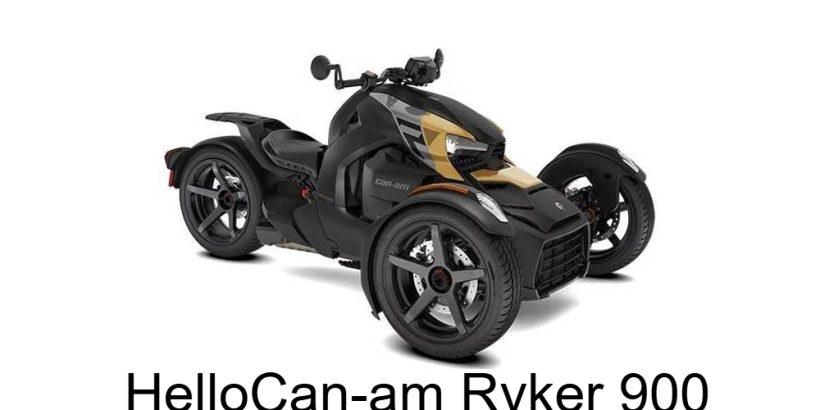
The Can-Am Ryker 900 represents a significant innovation in the three-wheeled motorcycle market, blending advanced engineering, rider-centric ergonomics, and performance-oriented design. Developed by Bombardier Recreational Products (BRP), this model integrates cutting-edge technology with a distinct aesthetic and functional appeal. This analysis explores the mechanical sophistication, performance capabilities, market positioning, and long-term viability of the Can-Am Ryker 900 in the evolving landscape of powersports vehicles.
Mechanical Engineering and Design Principles
1. Powertrain and Performance Metrics
The Can-Am Ryker 900 is powered by a Rotax 900 ACE (Advanced Combustion Efficiency) engine, a three-cylinder, liquid-cooled system delivering 82 horsepower. The Rotax engine series is renowned for its high thermal efficiency, low friction components, and optimized power delivery, ensuring a dynamic yet fuel-efficient ride.
The electronically controlled fuel injection system maximizes air-fuel mixture precision, resulting in improved throttle response and reduced emissions. With an integrated dry-sump lubrication system, the engine achieves lower oil temperatures and reduced internal resistance, prolonging engine life and enhancing performance under varying riding conditions.
2. Transmission and Drivetrain Efficiency
Unlike conventional motorcycles that employ a manual or semi-automatic gearbox, the Can-Am Ryker 900 features a continuously variable transmission (CVT), which ensures seamless power delivery without the need for manual gear shifts. This twist-and-go mechanism enhances accessibility for novice riders while maintaining responsive acceleration for experienced users.
The shaft-driven final drive replaces traditional chain or belt systems, reducing maintenance requirements and increasing durability. The inherent advantages of a shaft-driven system include higher torque efficiency, reduced drivetrain losses, and an extended service interval compared to belt-driven alternatives.
Structural and Aerodynamic Considerations
1. Chassis and Suspension Dynamics
The Ryker 900 incorporates a lightweight yet robust steel tube frame, engineered to provide optimal strength-to-weight ratio while maintaining structural integrity. The double-wishbone front suspension system, paired with a monoshock rear suspension, contributes to superior road stability and improved cornering dynamics.
The Vehicle Stability System (VSS) integrates traction control, an anti-lock braking system (ABS), and stability control, ensuring optimal handling across diverse road conditions. The low center of gravity enhances maneuverability while minimizing body roll, a crucial feature for three-wheeled configurations.
2. Aerodynamic Efficiency and Ergonomics
The Ryker 900’s design prioritizes aerodynamic stability, reducing wind resistance and optimizing airflow for enhanced ride comfort. Adjustable footpeg positioning and variable handlebar configurations cater to riders of different statures, promoting ergonomic efficiency. The rider-forward positioning facilitates better weight distribution and control, particularly during high-speed maneuvers.
Technological Integrations and Safety Enhancements
- Advanced Braking System: The dual-disc braking system, coupled with ABS, prevents wheel lock-up during sudden braking, thereby improving rider safety.
- Traction and Stability Control: The integrated traction control module dynamically adjusts wheel speed, mitigating skidding or oversteer tendencies on slippery surfaces.
- Riding Modes: The Eco Mode optimizes fuel economy by adjusting throttle response, while Sport Mode enhances acceleration dynamics, particularly for performance-oriented riders.
- LED Lighting System: Improves visibility and reduces energy consumption, a critical factor in night riding safety.
Economic Viability and Market Positioning
1. Cost-Effectiveness and Competitive Comparison
The Can-Am Ryker 900 offers a compelling alternative to both traditional motorcycles and other three-wheeled vehicles. Below is a comparative assessment of its positioning within the market:
| Feature | Can-Am Ryker 900 | Competing Three-Wheelers |
|---|---|---|
| Engine Power | 82 HP | 70-80 HP |
| Transmission | CVT Automatic | Manual/Semi-Auto |
| Stability System | Advanced VSS | Basic Stability Control |
| Customization | Extensive Options | Limited Variability |
| Maintenance Costs | Low | Moderate to High |
| Fuel Efficiency | High | Moderate |
| Handling | Enhanced Precision | Variable Response |
The Ryker 900’s automatic transmission and shaft-driven mechanics position it as a low-maintenance, cost-efficient alternative to traditional motorcycles, particularly for riders seeking ease of use without sacrificing performance.
2. Customization and Consumer Appeal
One of the key differentiators of the Ryker 900 is its extensive customization potential. Riders can personalize the vehicle through:
- Interchangeable body panels offering diverse color and aesthetic variations.
- Aftermarket accessories, including upgraded seats, enhanced suspension components, and performance exhaust systems.
- Modular ergonomic adjustments, accommodating diverse rider preferences and comfort requirements.
Operational Longevity and Maintenance Protocols
To maximize the lifespan and operational efficiency of the Can-Am Ryker 900, adherence to regular maintenance is imperative. Recommended servicing includes:
- Lubrication System Management: Periodic oil changes using synthetic-grade lubricants to enhance engine longevity.
- Tire Pressure and Tread Assessment: Proper inflation levels ensure optimal traction and fuel efficiency.
- Battery Health Monitoring: Ensuring consistent charge levels to avoid electrical malfunctions.
- Brake System Inspections: Routine assessments of pad wear and hydraulic fluid integrity for optimal braking performance.
- Exterior and Structural Integrity Checks: Regular cleaning and corrosion prevention measures extend the vehicle’s aesthetic and mechanical lifespan.
Conclusion: Strategic Advantages of the Can-Am Ryker 900
From an engineering perspective, the Can-Am Ryker 900 exemplifies a synthesis of powertrain innovation, ergonomic efficiency, and technological advancement. Its Rotax 900 ACE engine, coupled with CVT automatic transmission, delivers an optimized blend of performance and user accessibility. The integration of stability-enhancing technologies—such as ABS, traction control, and a low center of gravity—enhances its safety profile relative to traditional motorcycles.
From a market standpoint, the Ryker 900’s competitive pricing, customization options, and low maintenance requirements position it as a formidable competitor in the three-wheeled vehicle segment. It appeals to both novice riders seeking an accessible entry into motorcycling and seasoned enthusiasts desiring a low-maintenance yet high-performance alternative.
